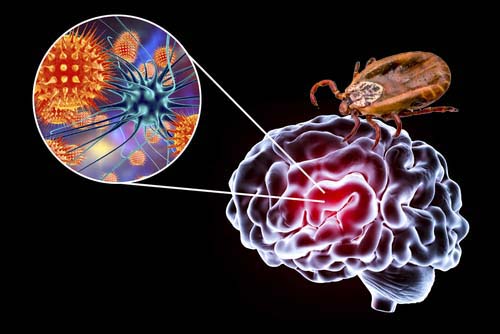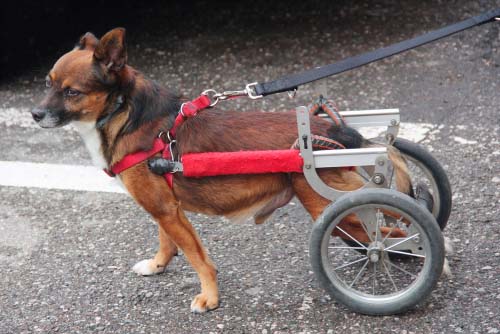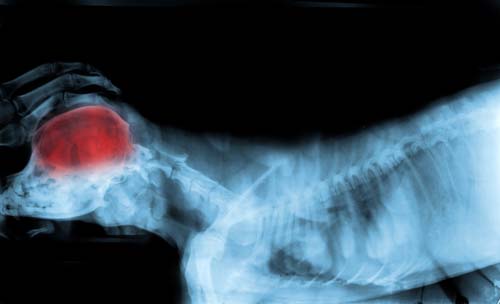
Table of Contents
Dogs can suffer from many health problems, including neurological issues which are often worrying for pet owners to deal with.
Knowing how to spot the progressing disease and what to do about it can not only prevent further development but also save a dog’s life.
Below are the most common neurological problems in dogs and what to do about them.
1. Parkinson's Disease
Parkinson’s disease in dogs is characterized by tremors, difficulty walking, and confusion. The cause of this neurological problem in dogs is still unknown, although it is believed to be hereditary.
Unlike humans, dogs can develop Parkinson’s at a relatively young age, even while they're still puppies, proving this to be an often inherited condition.
How to Prevent It:
Just like in humans, there is no way to prevent this degenerative disease. Parkinson's disease in dogs is rare but pet owners cannot ensure this never happens to their pup.
How to Fix It:
Unfortunately, there is no cure for Parkinson’s disease either, although some medications can be used to reduce symptoms.
Also, changes in diet may help, especially supplements to maintain muscle mass. All of this will depend on the individual dog and your vet will be able to advise you and devise a care plan.
2. Epilepsy
Epilepsy is perhaps one of the most recognizable neurological disorders. The one prominent symptom in dogs with epilepsy, just like with humans, is recurrent seizures.
Epilepsy in dogs can be caused by trauma, like a blow to the head, metabolic issues or the causes may be idiopathic, which means that the causes are unknown.
How to Prevent It:
There is no way to prevent epilepsy in dogs, although a healthy diet may perhaps help with prevention in a theoretical sense it definitely helps with treatment. There is no proven prevention method, however.
How to Fix It:
Epilepsy in dogs cannot be cured, but there are many ways to improve your epileptic pet's quality of life and reduce the number of seizures. Your vet may prescribe anti-seizure medication, which is often accompanied by diet changes.
There are also different natural remedies but their effects are still not scientifically proven; some work, others don't. CBD for dogs has been gaining traction recently and was even proven to have positive results.
3. Encephalitis
Encephalitis is an inflammation of the animal's brain. Encephalitis in dogs can be caused by viruses, parasites, bacteria, and fungi.
It can also be caused by diseases that ticks carry. Some breeds are more likely to be affected by this disease, including Chihuahua, Pugs, Maltese, and Terrier breeds.
Encephalitis is often accompanied by the inflammation of the canine's spinal cord (myelitis), and the meninges (meningitis).
Symptoms may be different depending on where the inflammation occurs, but some of the most common ones include fever, seizures, behavioral changes, and decreased consciousness.
How to Prevent It:
Since dog encephalitis can be caused by different infections, prevention is practically impossible.
You can, however, try to keep your pooch from getting parasites or ticks by proper hygiene and diet and with tick-preventing medication, which reduces the chances of him developing this neurological problem.
How to Fix It:
The typical course of action after diagnosis includes antibiotics and anticonvulsants if the dog suffers from seizures. However, the treatment will vary depending on the underlying cause.
For example, if the encephalitis condition is fungal then anti-fungal medication will be prescribed for your pup.
4. Meningitis
Meninges are protective membranes in the central nervous system. Meningitis is the inflammation of those membranes.
The symptoms of meningitis in dogs are similar to those of encephalitis, with the most dangerous symptoms being seizures and paralysis.
It is important to react fast if your dog shows any symptoms because meningitis can be fatal if left untreated.
This neurological disease in dogs is most commonly caused by bacterial infection, but it can also be caused by viral infections, parasites or fungi.
How to Prevent It:
Prevention is only possible for some of the underlying causes, not meningitis itself. That entails a high-quality diet, good housing conditions, access to fresh water, and regular vet check-ups.
As with encephalitis, preventing tick bites may also decrease the chances of a dog developing meningitis.
How to Fix It:
In most cases, the treatment will start with the administration of steroids that are supposed to suppress the inflammation.
Other medications include antibiotics and anti-fungal drugs, depending on the underlying cause, as well as pain medication and canine antiepileptic drugs for seizures.
5. Facial Nerve Paralysis
In dogs, condition of facial nerve paralysis is mostly caused by trauma or ear inflammation, but it can also be an idiopathic condition or caused by hypothyroidism or various forms of cancer.
Symptoms include dropping off the ear and lips on the affected side, loss of motor function, and the inability to blink, among others.
How to Prevent It:
The best way to prevent this is to by paying attention to possible underlying causes. Preventing ear inflammation or other ear problems with proper hygiene and dog grooming practices can help in avoiding facial nerve paralysis.
Although difficult to do with adventurous dogs, preventing injuries to the head will help as well.
How to Fix It:
In most cases of canine facial nerve paralysis, the treatment will include massage, laser therapy, electro-acupuncture, heat application to the affected muscles, and low-level light therapy (LLLT).
While these approaches can improve the condition and quality of life, in many cases the clinical signs remain permanently.
However, if the disorder is located in the middle ear, then surgery might be required to relieve the pain and discomfort.
6. Vestibular Syndrome
This syndrome typically affects older dogs and occurs suddenly. Vestibular syndrome in dogs affects the nerves located in the inner ear which are responsible for balance, so the animal will likely feel like the room is spinning.
Symptoms include nausea, head tilt, and difficulty standing.
Common causes include infection, improper and overzealous cleaning of the ears, stroke, trauma, tumors, and certain drugs, but it can also be an idiopathic condition or be present in the puppy from birth as a congenital defect.
How to Prevent It:
The best way to prevent this condition is to be extra careful when you clean your dog’s ears. Don’t apply too much pressure and dig too deep. Start on the outside and work your way inside until you feel resistance.
How to Fix It:
Motion sickness medications are often used to alleviate nausea and vomiting. Antibiotics are used if the disease is caused by infection and sometimes anti-inflammatory drugs are administered too.
Supportive care and confinement might be necessary until the issue is resolved.
7. Wobbler Disease
Wobbler disease syndrome affects the dog’s cervical spine and it is characterized by wobbly walking of the dog.
There are no known causes for this neurological disease, although it may be genetic in nature.
Great Danes and Dobermans are the most commonly affected breeds but other large and giant breed dogs are also likely to develop this syndrome.
How to Prevent It:
Since there are no well-established causes, there is no way to prevent this disease.
However, some experts believe that imbalanced nutrition can contribute to the development of wobbler disease in dogs, especially excess protein, calories, and calcium. Currently, there is no hard evidence to prove one way or the other.
How to Fix It:
Surgery is the only treatment option that provides significant improvement of the symptoms.
In cases where surgery is not advised due to possible complications, bed rest can help alleviate symptoms to some extent. In some cases, a dog may need a wheelchair to keep up with its daily life.
8. Cerebellar Degeneration
Cerebellar degeneration is a neurological condition in dogs that occurs when the cerebellum cells die.
The most common cause of cerebellar degeneration in dogs is infection with canine herpes; however, genetic predisposition in some breeds can also cause it.
Some of the symptoms include poor coordination, swaying, head tilts, and muscle tremors.
How to Prevent It:
There is no way to prevent this neurological disease.
How to Fix It:
There is no treatment to cure the disease, but there are some medications that show potential and improve symptoms, like buspirone, amantadine, and acetyl-l-carnitine. Your veterinarian will prescribe the proper care plan and essential drugs.
9. Brain Tumors
A brain tumor is the abnormal growth of cells that more often affects dogs older than five years. This type of tumor is more likely to affect certain breeds, particularly Boxers, Terriers, and Dobermans.
Seizures are the most common symptoms of brain tumors in dogs, followed by sensitivity to touch, abnormal behavior, vision problems, and uncoordinated movement.
The cause for this neurological problem in dogs is unknown.
How to Prevent It:
There is no way to prevent brain tumors, although some speculate that you can reduce the risks with a proper diet and the required amount of physical exercise.
How to Fix It:
Neurosurgery, radiation therapy, and chemotherapy medication are the three ways of treating canine brain tumors, depending on the type and the stage of the tumor.
READ NEXT: How to Recognize Cognitive Dysfunctions in Dogs






















